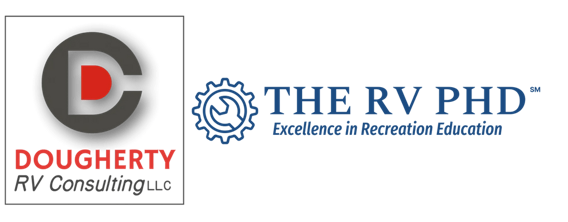Water cleanliness and safety are of primary importance to RVers, and for good reason. Because we travel from location to location with our water system in tow, we never really know the quality of the water we’re putting in our RV, and we need to maintain the system in the RV in a clean and sanitary manner.
There are several things all RVers can do to prevent water-borne illness from an unsanitary water system. Let’s take a look at these steps:
Sanitize the RV water system
Any water storage and distribution system can get dirty and contaminated and grow biologics that can cause illness. The risk is higher with RVs and boats because of the varying water supplies, especially well water that is untested or unfiltered.
After each long-term storage period or any time it is suspected that the water system has been contaminated (when in doubt) the water system must be sanitized. The instructions contained in the RVs owner’s manual can be followed, but we go a bit deeper here.
The idea here is to disinfect the inside surfaces of the entire potable water system. There are any number of pathogens, molds, and mildew that can grow in a warm moist environment. I have seen fresh water tanks with soil, mushrooms and “bio-gack” growing inside them. This is very difficult to correct but easy to prevent.
Disinfecting the system is simple using a sodium hypochlorite solution, or bleach. While store bought bleach is not ideal because of some additives, for the purpose of sanitizing the system it works fine as long as it is flushed out of the system after sanitizing.
One of the best guides I have found for this is from the Oregon Health Authority. It is a complete guide and includes an Excel spreadsheet calculator for chlorine amounts:
Oregon Health Authority Shock Chlorination
Oregon Health Authority Shock Chlorine Calculator
How to get solution into system.
Getting the chlorine solution into the RV’s water system depends on the design of the RV. Units with a gravity water fill for the tank are ideal, but many RVs don’t have gravity fills anymore but instead rely on a pressurized water fill from the city water fill into the freshwater tank.
The hypochlorite solution should be put into the freshwater tank.
Instructions for disinfection of freshwater systems on recreation vehicles (as approved by the U.S. Public Health Service):
Take ¼ cup of household bleach for every 15 gallons of water that your fresh water tank holds. Mix the bleach in one gallon of water and pour it into the freshwater tank. Fill the freshwater tank with potable water. Turn the water pump on and open all faucets, one at a time, and run water until you smell the bleach. If possible, drive or tow the RV to assist in cleaning the entire freshwater tank.Let it sit for 4 hours and then drain the entire system. Refill the freshwater tank and run water throughout the system (every tap) until you no longer smell the bleach at that location. It may be necessary to repeat this more than once. When you no longer smell bleach, the system is sanitized.
Whether you have a gravity fill or not, an easy way to add the bleach is with the RV Inline Sanitizer. This allows you to pour in the bleach into the inline tank and then turn on the water to fill the fresh water tank on the RV. You still need to know the volume of your fresh water tank and start with an empty tank
Water filtration
Now that we have sanitized the water system in the RV, would it make any sense to add unfiltered, potentially contaminated water to the system? Of course not.
Any water from any source introduced into the RV water system must first be filtered. NEVER connect a water source to the RV without a pre-filter. This is essential, even on a city water connection, as something like a water main break or maintenance can add a bolus of sand, silt, or other detritus into the water stream that ends in your RV and can cause great damage.
RV water filters not permanently installed in the RV utilize garden hose connections, some a holder or case, and are usually connected near the spigot.
There are a ton of options in the world of RV water treatment, from disposable filters to water-softening systems. It is your preference what level of protection you choose to use. Nowadays, many RVers will either install a high grade drinking water filter at the galley faucet or carry bottled water for drinking purposes, while still using a good filtration system for all the water entering the RV.
Filter media comes in many types, categorized by the size of particulate it will filter out. Some systems include UV water purification and some that promise to draft water from a stream and filter it for RV use using a built-in pump.

Whatever type of filter system you use, whether disposable or a more sophisticated system, make sure you do use a filter along with your RV drinking water hose.
Safety Note from the author: Chlorine in drinking is a concern for many people. Municipal water systems have been using chlorine to sanitize drinking water for decades, and we have recommended the same for RVs based on recommendations from the Public Health Service for decades. Sanitizing and then flushing the water system in your RV will bring the residual chlorine PPM down to very acceptable levels and then quickly out of the system entirely through filtration of new incoming water. While I have seen recommendations to further flush the water system again with baking soda, I have reservations about this practice, but have not personally tested it out.
